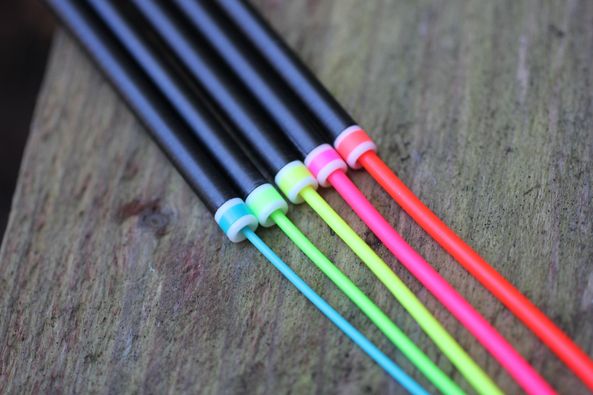
Pole elastics are an essential part of any angler’s arsenal, and selecting the correct elastic rating is crucial for a successful day’s fishing. The rating of an elastic determines the strength and stretchiness of the elastic, which in turn affects the amount of pressure that can be applied to the fish during the fight. Here, we’ll explain the different ratings of pole elastics and the fish they’re best suited for, as well as provide a table to show recommended hook lengths for each rating.
The most common ratings for pole elastics are between 2 and 20, with the higher the number, the stronger the elastic. The strength of the elastic is also affected by the diameter, with thicker elastics being stronger than thinner ones.
A rating of 2 to 4 is suitable for small fish such as roach, rudd, and perch. These elastics will be soft and stretch very easily, allowing for easy control of the fish without damaging them.
A rating of 5 to 8 is ideal for catching small sized carp, bream, and tench. These elastics will have more strengh than the smaller ratings, allowing for more control during the fight while still providing enough power to reel in the fish.
A rating of 10 to 14 is best for medium carp, tench, and barbel. These elastics will have a lot of stretch and power, allowing the angler to exert a lot of pressure on the fish during the fight.
Finally, a rating of 16 to 20 is ideal for targeting large specimen fish such as larger carp. These elastics are incredibly strong and provide the necessary power to control these large fish during the fight.
It’s essential to match the elastic rating to the type of fish you’re targeting, as using an elastic that’s too weak or too strong can result in lost fish or damage to the fish. Here’s a table to show recommended hook lengths for each elastic rating:
| Elastic Rating | Recommended Hook Length |
|---|---|
| 2-4 | upto 1.5lb |
| 5-8 | upto 3lb |
| 10-14 | upto 5lb |
| 16-20 | upto 8lb |
These recommended hook lengths are simply a guide, but it will ensure a balanced setup and will ensure that your hook length should be the weakest part of your pole setup. By putting too large a line on a lighter elastic there is a risk that when catching bigger fish the elastic stretches to its limit. The elastic will not stretch any further and starts to act just like line rather than a cushion between the rig and the pole. At this point there is a possibility that you may cause damage to your top kit or the rest of the pole.
In conclusion, selecting the right elastic for the fish you’re targeting is crucial to ensure a successful and enjoyable day’s fishing. Use the table above to guide you in selecting the right hook length for your elastic, and you’ll be sure to land your next big catch!
